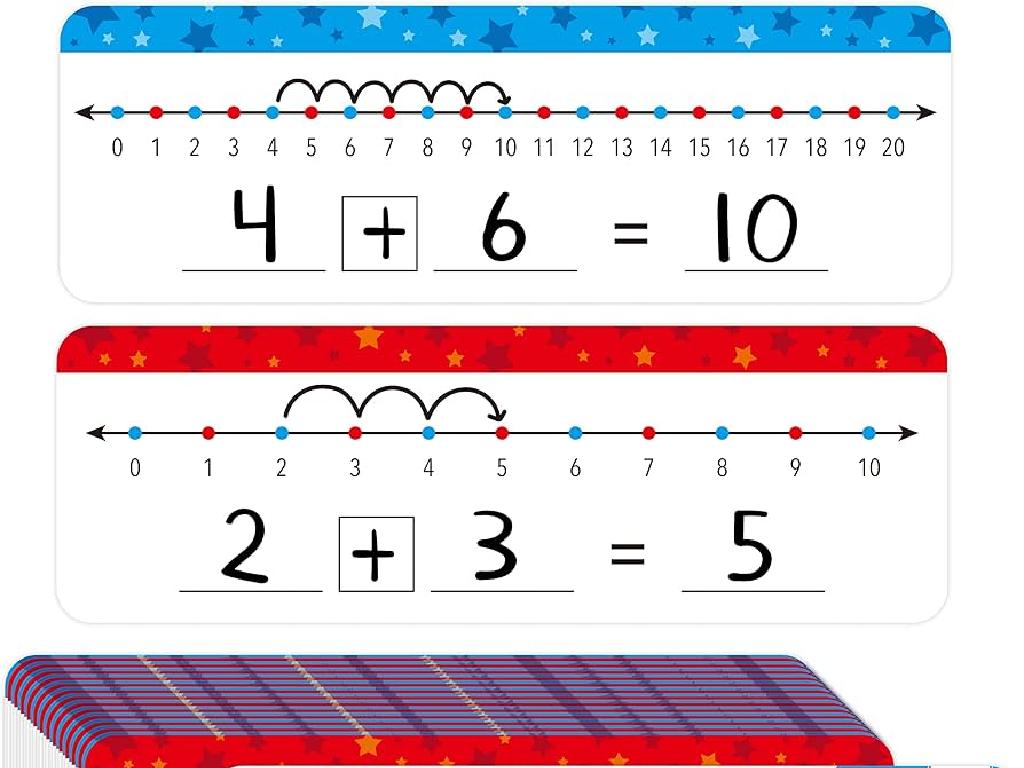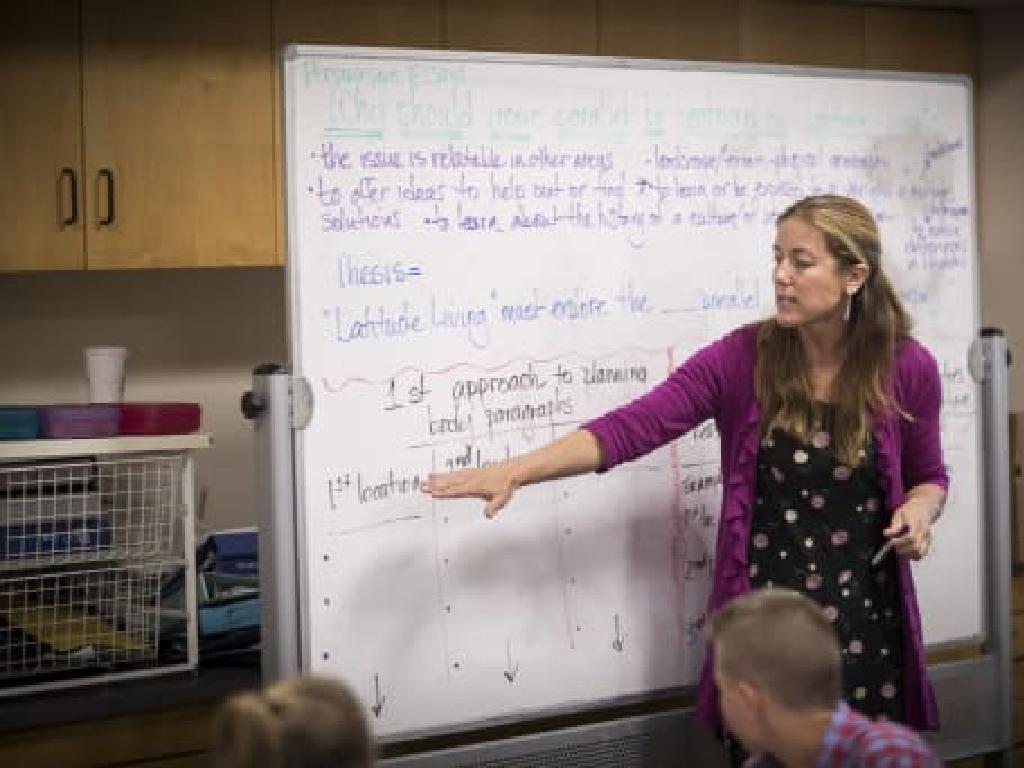Nuclear Physics
Subject: Science
Grade: High school
Topic: Physics
Please LOG IN to download the presentation. Access is available to registered users only.
View More Content
Welcome to Nuclear Physics
– Exploring the atom structure
– Atoms are the building blocks of matter, consisting of protons, neutrons, and electrons.
– Delving into the nucleus
– The nucleus, made of protons and neutrons, is the atom’s core.
– Grasping nuclear physics concepts
– Nuclear physics studies the nucleus, its components, and interactions.
– Significance of nuclear physics
– It’s crucial for energy production, medicine, and understanding the universe.
|
This slide introduces students to the fundamental concepts of nuclear physics, starting with the structure of the atom and its core component, the nucleus. It’s important to convey that nuclear physics is not just theoretical; it has practical applications that affect our daily lives, such as in nuclear energy and medical imaging technologies. Additionally, nuclear physics plays a vital role in our understanding of the cosmos, from the life cycle of stars to the mechanisms of the universe. Encourage students to think about how the small scale of nuclear physics impacts the large scale of cosmic events.
Atoms and Isotopes: The Building Blocks
– Define atoms and components
– Atoms are the smallest units of matter, consisting of protons, neutrons, and electrons.
– Explore isotopes significance
– Isotopes are atoms of the same element with different numbers of neutrons, affecting their properties.
– Isotopes in real-world applications
– Isotopes are used in medicine for diagnostics and treatment, in archaeology for dating artifacts, and in energy production.
– Understanding atomic stability
|
This slide introduces the fundamental concepts of nuclear physics, focusing on atoms and isotopes. Begin by defining an atom and describing its components: the nucleus, containing protons and neutrons, and the surrounding electrons. Emphasize the role of protons in defining the element and neutrons in contributing to isotopes. Discuss the importance of isotopes in various fields, such as their use in medical imaging and treatment (e.g., PET scans, cancer therapy), carbon dating in archaeology, and as fuel in nuclear reactors. Highlight how isotopes can lead to different atomic masses and stability, paving the way for discussions on radioactive decay and nuclear reactions. Encourage students to think of practical examples where isotopes play a crucial role.
Understanding Radioactivity
– Define radioactivity
– Spontaneous emission of particles from unstable atomic nuclei
– Explore decay types
– Alpha, beta, and gamma decay with distinct properties
– Radioactive material safety
– Use of lead shields, remote handling, and proper storage
– Impact on human health
– Prolonged exposure can cause damage to living tissue
|
This slide introduces the concept of radioactivity, which is a key topic in nuclear physics. Radioactivity refers to the spontaneous emission of particles or energy from an unstable atomic nucleus. There are three main types of radioactive decay: alpha, beta, and gamma, each with unique characteristics and penetration abilities. Safety measures are crucial when dealing with radioactive materials to protect against harmful exposure. These include using lead shields, handling materials with remote-controlled tools, and ensuring proper storage. It’s also important to discuss the potential health impacts of radioactivity, such as the risk of cancer from prolonged exposure. The slide aims to provide a foundational understanding of radioactivity and its significance in both science and safety.
Nuclear Reactions: Fission vs. Fusion
– Fission: Splitting the atom
– Heavy nucleus splits into smaller nuclei releasing energy, e.g., Uranium-235.
– Fusion: Powering the stars
– Light nuclei combine at high temperatures to form a heavier nucleus, e.g., Hydrogen isotopes in the sun.
– Key differences of Fission & Fusion
– Fission involves splitting, Fusion involves combining; Fission produces radioactive waste, Fusion does not.
– Real-world applications
– Fission is used in nuclear reactors; Fusion is researched for sustainable energy.
|
This slide introduces students to the fundamental nuclear reactions: fission and fusion. Fission is the process of splitting a heavy nucleus into smaller nuclei, releasing a significant amount of energy, which is harnessed in nuclear power plants. Fusion, on the other hand, occurs when light nuclei combine at extremely high temperatures to form a heavier nucleus, releasing energy, as seen in stars like our sun. Highlight the differences between the two, such as the byproducts produced and the conditions required for each process. Discuss the real-world applications, including the current use of fission for energy production and the potential of fusion as a future clean energy source. Encourage students to consider the implications of each process for energy generation and the environment.
Exploring Nuclear Energy
– Function of Nuclear Power Plants
– Nuclear plants generate electricity through fission reactions in a controlled environment.
– Pros and Cons of Nuclear Energy
– Benefits include low greenhouse gas emissions; risks involve radioactive waste and potential accidents.
– Nuclear Energy’s Future Outlook
– Advances in technology may lead to safer, more efficient nuclear power solutions.
|
This slide aims to provide students with a comprehensive understanding of nuclear energy. Begin by explaining how nuclear power plants operate, emphasizing the process of nuclear fission to produce heat, which then generates electricity. Discuss the benefits of nuclear energy, such as its efficiency and low carbon footprint, as well as the risks, including the challenges of radioactive waste disposal and the high costs of plant construction and decommissioning. Conclude with a look at the future of nuclear power, considering developments in reactor design and safety, as well as the role of nuclear energy in a sustainable energy mix. Encourage students to think critically about the balance between energy needs and environmental protection.
Applications of Nuclear Physics
– Medical imaging and treatments
– Techniques like PET scans and radiation therapy for cancer
– Food irradiation in agriculture
– Prolongs shelf life and eliminates pests without chemicals
– Particle accelerators in research
– Used to discover particles and understand fundamental forces
|
This slide highlights the practical applications of nuclear physics in various fields. In medicine, nuclear technology is crucial for diagnostic imaging and treating diseases, such as cancer, through radiation therapy. In agriculture, food irradiation helps in preserving food longer and controlling pests, reducing the need for harmful pesticides. Scientific research benefits from particle accelerators, which are essential tools for physicists to explore the properties of matter at the smallest scales and to understand the universe’s fundamental forces and particles. Encourage students to think about the ethical considerations and safety measures associated with the use of nuclear technology in these areas.
Nuclear Physics in the Universe
– Nuclear reactions power stars
– Stars fuse hydrogen into helium, releasing energy.
– Supernovae forge heavy elements
– Explosive star deaths create elements like gold & uranium.
– Heavy elements from star deaths
– Elements heavier than iron are made in supernova explosions.
– Big Bang’s nuclear beginnings
– The universe’s first elements formed seconds after the Big Bang.
|
This slide explores the role of nuclear physics in cosmic phenomena. Nuclear reactions within stars are the processes by which they shine, fusing hydrogen into helium and releasing immense energy. Supernovae, the cataclysmic explosions of stars, are responsible for creating many of the heavy elements found on Earth, such as gold and uranium. These elements are formed under the extreme pressures and temperatures of a supernova. The Big Bang theory suggests that the universe began with a hot, dense state, which allowed the first nuclear reactions to occur, leading to the formation of the earliest elements like hydrogen and helium. Understanding these concepts is crucial for students to grasp the significance of nuclear physics in the context of the universe.
Class Activity: Build a Model Atom
– Gather materials: Styrofoam, toothpicks, paint
– Create protons, neutrons, electrons
– Protons and neutrons form the nucleus, electrons orbit around
– Assemble your atom model
– Use toothpicks to connect Styrofoam balls, representing the nucleus and electron orbits
– Understand atomic structure
– Visualize the components of an atom and their arrangement
|
This hands-on activity is designed to help students visualize and understand the structure of an atom. Provide Styrofoam balls of different sizes to represent protons, neutrons, and electrons. Protons and neutrons will be placed at the center to form the nucleus, while electrons will be placed around the nucleus to represent their orbits. Use toothpicks to connect the Styrofoam balls, with larger balls for the nucleus and smaller ones for the electrons. Paint can be used to differentiate between protons, neutrons, and electrons. This activity will reinforce the concept of atomic structure and the arrangement of subatomic particles. Encourage creativity and ensure that students follow the basic principles of atomic structure. Possible variations of the activity could include building different types of atoms by changing the number of protons, neutrons, and electrons.
Wrapping Up: Nuclear Physics
– Recap key Nuclear Physics concepts
– Nuclear Physics in daily life
– Medical imaging, energy production, and scientific research
– Open floor for questions
– Encourage curiosity and participation
– Ask anything about today’s lesson or Nuclear Physics in general
|
This concluding slide aims to summarize the main points discussed during the Nuclear Physics presentation. Start by briefly recapping the key concepts such as atomic structure, radioactivity, and nuclear reactions. Highlight the relevance of Nuclear Physics in everyday life, including its applications in healthcare, energy, and technology. Open the floor for questions, encouraging students to ask about any aspect of the lesson they are curious about or may not fully understand. This is also an opportunity to foster a deeper interest in the subject by discussing how Nuclear Physics impacts modern society and potential career paths in this field.






